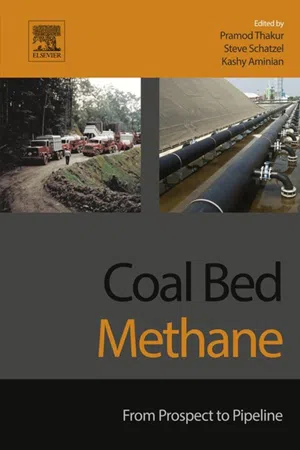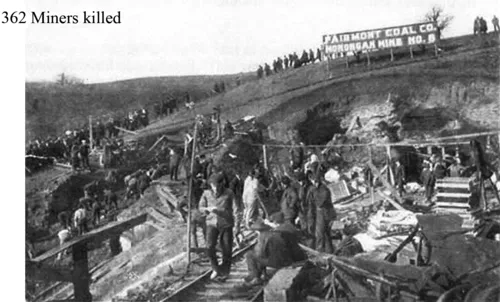
Coal Bed Methane
From Prospect to Pipeline
- 440 pages
- English
- ePUB (mobile friendly)
- Available on iOS & Android
About This Book
Coal Bed Methane: From Prospect to Pipeline is the proceedings of the 25 th anniversary of the North American Coal Bed Methane Forum. It provides the latest advancements in the production of coal bed methane covering a variety of topics, from exploration to gas processing, for commercial utilization. Additionally, it presents the origin of gas in coal, reservoir engineering, control of methane in coal mines, production techniques, water management, and gas processing.
The vast coal resources in the United States continue to produce tremendous amounts of natural gas, contributing to a diverse range energy assets. Following a rapid advancement and subsequent plateau in technological developments, this book captures the full life cycle of a well and offers petroleum geologists and engineers a single source of a broad range of coal bed methane applications. This book addresses crucial technical topics, including exploration and evaluation of coal bed reservoirs; hydraulic fracturing of CBM wells; coal seam degasification; and production engineering and processing, among others. It also covers legal issues, permitting, and economic analysis of CBM projects.
- Edited by a team of coal bed methane experts from industry, academia and government who have more than 75 years of combined experience in the field
- Authored by well-recognized members of the gas and coal industry, universities, US government departments, such as the Department of Energy and the National Institute of Occupational Safety and Health (NIOSH)
- More than 200 figures, photographs, and illustrations aid in the understanding of the fundamental concepts
- Presents the full scope of improvements in US energy independence, coal mine safety, and greenhouse gas emissions
Frequently asked questions
Information
Coalbed Methane
A Miner’s Curse and a Valuable Resource
Abstract
Keywords
Appalachian basin; Coalbed methane; Greenhouse gas
| Time Period | Coal Mine Disasters |
| Through 1875 | 19 |
| 1876–1900 | 101 |
| 1901–1925 | 305 |
| 1926–1947 | 147 |
| 1951–1975 | 35 |
| 1976–2003 | 15 |
| 2004–2013 | 2 |
| Total | 624 |
| Undocumented | >300 |
| Estimated total US Coal mine deaths | >8000 |
1.1. Abundance of Methane in Most Coalbeds
1.2. CBM: Already a Commercial Success
1.3. CMM: Pros and Cons
Table of contents
- Cover image
- Title page
- Table of Contents
- Copyright
- Contributors
- Preface
- Chapter 1. Coalbed Methane: A Miner’s Curse and a Valuable Resource
- Chapter 2. The Origin of Coalbed Methane
- Chapter 3. Geology of North American Coalbed Methane Reservoirs
- Chapter 4. Evaluation of Coalbed Methane Reservoirs
- Chapter 5. Wireline Logs for Coalbed Evaluation
- Chapter 6. Vertical Well Construction and Hydraulic Fracturing for CBM Completions
- Chapter 7. Horizontal Coalbed Methane Wells Drilled from Surface
- Chapter 8. Coal Seam Degasification
- Chapter 9. Gas Outbursts in Coal Seams
- Chapter 10. Production Engineering Design
- Chapter 11. Coalbed and Coal Mine Methane Gas Purification
- Chapter 12. Current and Emerging Practices for Managing Coalbed Methane Produced Water in the United States
- Chapter 13. Plugging In-Mine Boreholes and CBM Wells Drilled from Surface
- Chapter 14. Economic Analysis of Coalbed Methane Projects
- Chapter 15. Legal Issues Associated with Coalbed Methane Development
- Chapter 16. Permitting Coalbed Methane Wells
- Chapter 17. United States Lower 48 Coalbed Methane—Benchmark (2010)
- Chapter 18. Worldwide Coal Mine Methane and Coalbed Methane Activities
- Index